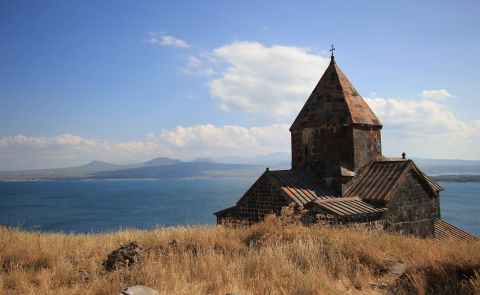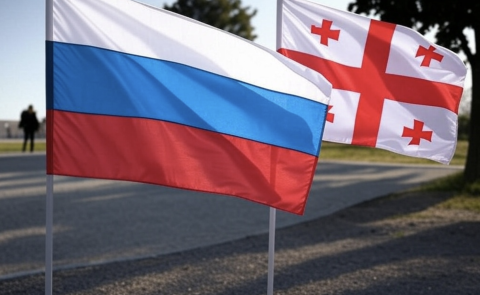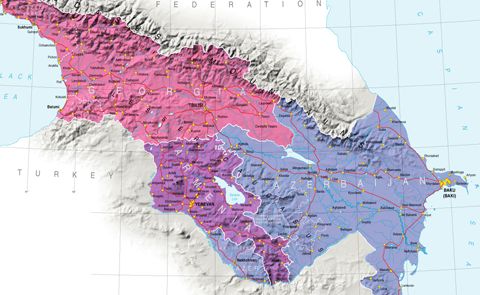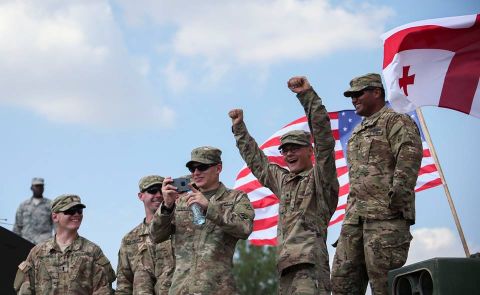
China's Evolving Position on the Middle Corridor

The war in Ukraine could prompt China to seek a greater role in the development of the Middle Corridor. Beijing's recent summit in Xi'an with Central Asian states signalled a growing Chinese interest in finding new routes that could eclipse the more traditional Russian route.
Since the outbreak of war in Ukraine, the patterns of Eurasian connectivity have been undergoing significant changes. Alternative trade routes are emerging as the more traditional Russian route, which for decades functioned as the most active corridor between the EU and China, now faces hurdles as a result of Western sanctions.
Alternatives to the Russian route include the so-called Middle Corridor, which runs from Turkey through Georgia and Azerbaijan in the South Caucasus to Central Asia and China. Geographically, this is the shortest route between western China and the European Union (EU). However, throughout 2022, China has been somewhat reluctant to openly support the expansion of the corridor, as evidenced by the lack of statements on the matter. Perhaps the expectation was that the war in Ukraine would end quickly and connectivity patterns would return to normal.
However, with the war in Ukraine likely to continue for the foreseeable future, the issue of transit through Russia weighs even more heavily on the EU and China. For them, the need to explore other options will grow over time, and perhaps it is this sense of urgency that has led China to be more open about its infrastructure plans.
In Central Asia, for instance, China's geo-economic role has been growing steadily over the past three decades. The latest development came in May, when the presidents of Uzbekistan, Kazakhstan, Kyrgyzstan, Turkmenistan and Tajikistan, as well as Chinese President Xi Jinping, signed numerous agreements on bilateral cooperation at the first face-to-face forum in Xi'an, China.
Participants of the summit, which the Chinese leader called a "new era" in relations with the region, agreed to create various mechanisms for better communication between the countries in the fields of economy, education, security, logistics, trade, humanitarian cooperation and even ecology. Of relevance to the Middle Corridor, the countries agreed in Xi'an to build the China-Kyrgyzstan-Uzbekistan railway and accelerate general transit and connectivity across the Central Asian region.
For China, a more effective approach to Central Asia is to see the region alongside the Caspian Sea rather than in isolation from it. If Central Asia were to replace the increasingly constrained Russian corridor as a transit option, the Trans-Caspian route (plus the South Caucasus) would be the shortest route for China to reach the EU market. The Trans-Caspian + South Caucasus trade routes now appear more attractive to Central Asia and the EU as a result of the war in Ukraine.
This was recently echoed by the Chinese Ambassador to Georgia in an interview, when he assessed the chances of the Middle Corridor, while stressing the importance of both EU and Chinese involvement in the project. Georgia has also moved closer to launching the long-stalled Anaklia project, which is likely to be of interest to China. Envisioned as a deep-sea port, Anaklia could help consolidate the expanding Middle Corridor.
The South Caucasus already has well-developed infrastructure. The Baku-Tbilisi-Kars railway was inaugurated in late 2017, and the expanding network of regional roads connecting the Caspian Sea to the Black Sea provides a suitable basis for shifting trade between China and the EU from the Russian route to the South Caucasus. Azerbaijan and Georgia have significant trade links with China. Moreover, the Belt and Road Initiative (BRI) projects and cooperation dovetail with the national infrastructure development goals of Azerbaijan and Georgia, which underscore the importance of China's efforts.
Rarely have so many countries of different size, economic weight and geopolitical importance come together to pursue a geo-economic project. The Middle Corridor is particularly attractive to smaller nations. The leaders of these countries have taken active diplomatic steps to improve and, most importantly, strengthen communication along the route from Georgia through Azerbaijan to the Central Asian republics. Memoranda of Understanding, high-level visits and agreements to reduce tariffs have been signed over the past year.
The Middle Corridor has strong potential for expansion as Turkey and Armenia move closer to opening their long-closed border, with the first major steps already taken. Moreover, bilateral trade between the two countries has been boosted and the general mood in Ankara and Yerevan is positive, creating favourable conditions for rapprochement. There is another development that is likely to culminate in a major peace agreement. Despite the fact that Armenia and Azerbaijan have so far failed to reach a comprehensive peace agreement over Nagorno-Karabakh, the recent diplomatic flurry suggests that Baku and Yerevan are moving closer to signing a peace treaty.
China is particularly interested in the emerging Middle Corridor. For Beijing, alternative trade routes are essential to gaining a greater place on the global stage, especially in the face of growing competition from the US. Like the medieval Silk Roads, corridors rarely remain static. They are constantly adapting to new opportunities and avoiding potential geopolitical dangers. Contrary to popular belief, China's massive BRI is not so static either, evolving and adapting to emerging opportunities and challenges. From a longer-term perspective, China is just getting started in Central Asia, and geography dictates that the next area for Beijing's more active involvement could be the South Caucasus itself.
Emil Avdaliani is a professor of international relations at the European University in Tbilisi, Georgia, and a scholar of the Silk Roads.





